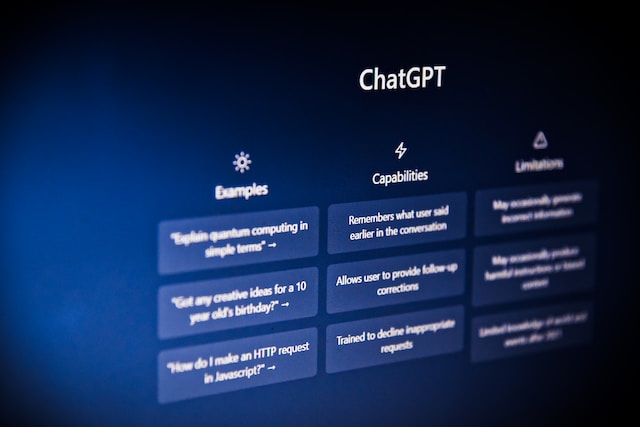Hello, tech enthusiasts and curious minds! Today, we’re going on a fascinating journey through the inner workings of ChatGPT, OpenAI’s powerful language model. If you’ve ever wondered how ChatGPT carries on those engaging conversations, or how it manages to reply accurately to a wide range of queries, then this is your backstage pass!

What is ChatGPT?
ChatGPT is essentially an AI chatbot trained by OpenAI, using an advanced variant of the GPT (Generative Pre-trained Transformer) model. It’s like a digital friend who can chat about pretty much anything, from explaining complex topics like we’re doing now, to helping draft emails, or even writing a short story!
Under the Hood: ChatGPT’s Tech Stack
ChatGPT runs on a blend of potent technologies. It’s like the best kind of smoothie, mixing different tech ingredients to create something deliciously smart.
Cloud
ChatGPT thrives in the cloud, specifically on Microsoft Azure, which provides scalable and reliable infrastructure for it to operate seamlessly.
Databases
The specifics of data storage aren’t public, but we do know OpenAI uses robust, secure databases to store the model parameters and training data for ChatGPT.
Programming Languages
Python is the key language for ChatGPT. Its readability, simplicity, and comprehensive libraries make it a fantastic tool for creating and refining AI models.
Model Servers
Once trained, the ChatGPT model is served from high-performance servers that can quickly process user inputs and generate responses.
Let’s Get Chatty: How ChatGPT Works
ChatGPT employs an architecture known as Transformer. It’s designed to handle sequential input, making it a great choice for understanding and generating text. Let’s explore how this works:
Tokenizing Input
ChatGPT breaks down the user’s input into smaller parts called tokens. Imagine breaking a sentence into individual words and punctuation, much like how we dissect sentences when learning a new language.
Understanding Context
Each token is analyzed within the context of the tokens around it. It’s like understanding that “bat” in “baseball bat” refers to sports equipment, not a flying mammal.
Generating Response
Based on the contextual understanding, ChatGPT generates a sequence of tokens to form a coherent response. It’s like figuring out the best reply in a conversation, choosing each word carefully to convey your thoughts.
Serving the Chats
Once ChatGPT is ready to reply, here’s how it gets back to you:
Pass the Tokens to ChatGPT
The generated tokens, forming the response, are passed from the model server.
Decoding ChatGPT Response
These tokens are then decoded back into human-readable text.
Voila!
The response is sent back to the user interface, ready for you to read.
So, while it feels like you’re chatting with a smart friend, what’s really happening is a fascinating dance of tokenization, context analysis, response generation, and decoding!
ChatGPT’s Models
ChatGPT uses a variety of models to generate responses to user queries. These models include:
Generative pre-trained transformer
This model is responsible for generating the text of the response.
Dialogue management model
This model is responsible for managing the flow of the conversation.
Response selection model
This model is responsible for selecting the best response from a set of possible responses.
ChatGPT’s Challenges
ChatGPT faces a number of challenges, including:
Bias by ChatGPT
ChatGPT is trained on a massive dataset of text and code, which means that it can be biased in the same way that the dataset is biased.
Making ChatGPT Safe
ChatGPT can be used to generate harmful or offensive content.
Scaling ChatGPT
ChatGPT is a computationally expensive model, which means that it can be difficult to scale to meet demand.
ChatGPT’s Future
ChatGPT is a powerful tool that has the potential to revolutionize the way we interact with computers. In the future, ChatGPT could be used for a variety of purposes, including:
Customer service
ChatGPT could be used to provide customer service by answering questions and resolving issues.
Education
ChatGPT could be used to provide personalized education by tailoring lessons to the individual student’s needs.
Entertainment
ChatGPT could be used to create interactive entertainment experiences, such as games and virtual worlds.
Wrapping Up
At its core, ChatGPT is a testament to the power of cloud computing, clever programming, and innovative AI model architectures. Though its conversations are seamless and natural, behind the scenes it’s a grand spectacle of technologies working in perfect harmony. So, the next time you’re chatting with ChatGPT, take a moment to appreciate the remarkable tech symphony playing out beneath each reply!
Remember, technologies are just tools. It’s the innovative minds of engineers that breathe life into them, crafting an application loved by millions worldwide.
Understanding the engineering architecture and technology stack of leading digital platforms like ChatGPT is not only fascinating but also crucial. It’s a hot topic in many product management and system architect interviews, where your knowledge of such scalable systems could be a decisive factor. If you’re prepping for such interviews and need a mentor, don’t hesitate. Reach out to us at Entrustech. We’re here to help you navigate through your preparation and guide you towards acing your interviews. Remember, knowledge shared is knowledge multiplied. So, share this insightful post with your network. Take the first step today and invest in your future success with Entrustech!
I hope this exploration of ChatGPT tech stack was enlightening! Feel free to share it with your network if you found it valuable.
